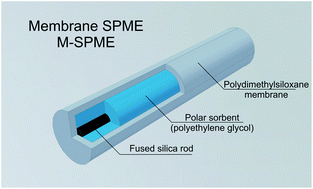Determination of volatile organic compounds in water samples using membrane-solid phase microextraction (M-SPME) (headspace version)
Abstract
The results of a study on the use of membrane-

* Corresponding authors
a
Gdansk University of Technology, Faculty of Chemistry, Department of Physical Chemistry, Narutowicza Str.11/12, Gdansk 80-233, Poland
E-mail:
adamklos@wp.pl
Fax: +48 5834 72694
Tel: +48 5824 72110
b
Gdansk University of Technology, Faculty of Chemistry, Department of Analytical Chemistry, Narutowicza Str.11/12, Gdansk 80-233, Poland
E-mail:
chemanal@pg.gda.pl
Fax: +48 5834 72694
Tel: +48 5824 72110
The results of a study on the use of membrane-

 Please wait while we load your content...
Something went wrong. Try again?
Please wait while we load your content...
Something went wrong. Try again?
A. Spietelun, Ł. Marcinkowski, A. Kloskowski and J. Namieśnik, Analyst, 2013, 138, 5099 DOI: 10.1039/C3AN36851C
To request permission to reproduce material from this article, please go to the Copyright Clearance Center request page.
If you are an author contributing to an RSC publication, you do not need to request permission provided correct acknowledgement is given.
If you are the author of this article, you do not need to request permission to reproduce figures and diagrams provided correct acknowledgement is given. If you want to reproduce the whole article in a third-party publication (excluding your thesis/dissertation for which permission is not required) please go to the Copyright Clearance Center request page.
Read more about how to correctly acknowledge RSC content.
 Fetching data from CrossRef.
Fetching data from CrossRef.
This may take some time to load.
Loading related content
